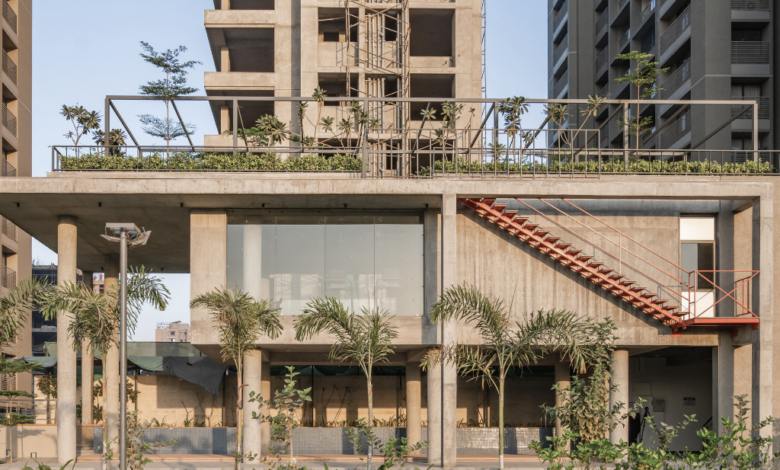Creating Cohesive Community Spaces: A Modern Approach

The concept of communal living has witnessed a resurgence, with increasing numbers of people gravitating towards environments that foster community, connection, and convenience. People are moving toward cities such as Albany in New York State to create a feeling of community in the fast-paced contemporary world. One prominent example is the availability of luxury apartments Albany NY, which seamlessly integrate these communal elements. These spaces are not just about providing shelter but about creating an environment where people can connect, collaborate, and thrive.
This modern approach to living goes beyond just providing shelter; it’s about designing spaces catering to today’s residents’ social, technological, and environmental needs. By understanding and implementing cohesive community spaces, developers can create living environments that enhance the quality of life for their occupants. Here, we explore the core elements that make these community spaces successful and beneficial.
The Rise of Communal Living
Communal living is not a new concept, but its popularity is again rising. This resurgence is fueled by urbanization, the desire for sustainability, and the need for social interaction. According to a report, 79% of residents in urban areas favor closer-knit communities where amenities and social spaces are easily accessible. Part of this change might be attributed to evolving lifestyles and the growing problem of urban loneliness. As more people move to cities, the demand for spaces that offer more than just a place to live has grown significantly.
Design Elements that Foster Community
Adequate communal spaces are built on thoughtful design principles. Key elements include open-plan layouts, versatile common areas, and strategic placement of amenities to encourage interaction. Shared gardens, co-working spaces, and communal kitchens are becoming staples in these environments. These features are essential in creating a sense of unity and accessibility within the community. The design must cater to its residents’ physical and emotional needs, ensuring they feel comfortable and connected.
Architectural Features
Spaces that promote visibility and openness, like glass walls and central courtyards, can significantly boost interaction among residents. Such architectural designs ensure community members can frequently see and engage with each other, fostering a sense of belonging. Additionally, flexible spaces that can be easily transformed for different uses, such as hosting events or quiet relaxation, can enhance the utility and appeal of communal areas.
Landscaping
Green spaces and outdoor amenities also play a vital role. They provide venues for leisure activities and social events, which can enhance the communal experience. Well-landscaped areas can simultaneously serve as tranquil retreats and communal gathering spots. These locations can have outdoor dining areas, gardens, and walking trails to encourage locals to spend time outside and engage with the environment and one another. Gardening activities and community green initiatives can further strengthen the bond among residents, providing shared goals and activities.
Technology Integration in Communal Spaces
Technological advancements offer numerous ways to enhance communal living environments. Smart home devices, high-speed internet, and virtual engagement platforms allow residents to connect and manage their living spaces more efficiently. This integration makes everyday tasks easier and enhances the overall living experience. Incorporating technology into common areas guarantees resident safety and connectivity while adding convenience.
Smart Technology
Features such as automated lighting, smart thermostats, and security systems provide convenience and contribute to sustainability efforts. These innovations can significantly reduce energy consumption and costs, aligning with the increasing preference for eco-friendly solutions. For instance, smart thermostats can optimize heating and cooling based on occupancy, reducing waste and ensuring comfort. Automated systems can also monitor energy use, helping residents to live more sustainably.
Connectivity
High-speed internet and shared digital spaces enable residents to stay connected with one another, which is especially valuable in larger communities. Platforms facilitating virtual meetings, community boards, and social interactions can help foster a closer-knit community, even in expansive residential complexes. It is particularly relevant today, where remote work and virtual interaction have become the norm. Connectivity ensures that residents can seamlessly maintain their personal and professional lives within the community.
Environmental Considerations in Community Design
Environmentally sustainable practices are now a core principle in modern community design. Integrating green building practices, renewable energy sources, and waste reduction strategies is essential. Significantly incorporating these elements contributes to the well-being of the community and the planet. Sustainable design addresses environmental concerns and reduces operating costs, benefiting residents economically.
Renewable Energy Sources
Public spaces may encourage energy efficiency and a minor carbon impact by utilizing solar panels, wind turbines, and other renewable energy sources. These practices help communities be more self-sufficient and environmentally responsible. By harvesting their energy, communities can reduce their dependency on non-renewable resources and contribute to global sustainability efforts. Additionally, renewable energy solutions often provide cost savings over time, benefiting all residents.
Recycling and Composting Programs
Implementing comprehensive recycling and composting programs can significantly reduce waste and promote sustainability. These programs promote a sense of shared responsibility by enticing locals to contribute to the upkeep of their surroundings actively. Education and regular events related to sustainability can enhance participation and awareness among residents, ensuring that everyone contributes to the community’s green efforts. Programs like these help the environment and build a communal spirit as residents work towards a common goal.
The Role of Amenities in Community Spaces
Amenities are crucial in defining the quality of life within a community. The amenities must accommodate various interests and demands, ranging from libraries and entertainment lounges to fitness centers and swimming pools. They offer places for relaxation, work, and play, contributing to a well-rounded living experience. These shared spaces enable residents to engage in various activities without leaving their community, promoting convenience and interaction. The right mix of amenities can attract a diverse group of residents, enhancing the community’s vibrancy.
Fitness and Wellness
Onsite fitness centers and wellness programs provide convenience and promote a healthier lifestyle. These amenities can become a central hub for community activities and social interactions. Residents can participate in group fitness classes or wellness workshops or use the facilities for personal exercise routines, contributing to their physical well-being. Wellness programs also include mental health resources and relaxation techniques catering to holistic health.
Entertainment and Leisure
Including entertainment and recreational amenities such as theaters, game rooms, and communal kitchens can significantly enhance the residential experience. These spaces encourage residents to engage with one another, building stronger community bonds. Regularly scheduled events, like movie nights or cooking classes, provide opportunities for residents to meet and socialize in a relaxed setting. Leisure amenities add fun and variety to life, making the communal living experience more enjoyable and engaging.
Navigating Social Dynamics in Shared Environments
Managing social dynamics is crucial for maintaining harmony in communal spaces. It involves facilitating positive interactions and addressing conflicts promptly and fairly. Social events, community meetings, and transparent communication channels nurture a cooperative environment. Developing a sense of community is an ongoing process that requires commitment from both residents and management. Clear rules, open communication, and regular community-building activities help maintain a positive atmosphere.
Conflict Resolution
A structured approach to conflict resolution ensures that disputes are handled efficiently and amicably. Resident councils and mediation services can play a significant role in maintaining peace and cooperation among community members. Regular training and conflict management resources can equip residents and staff to deal with issues constructively. By fostering mutual respect and understanding of culture, communities can navigate social dynamics smoothly, ensuring a pleasant living environment.
Case Studies of Successful Community Spaces
Looking at successful community spaces offers valuable insights. For instance, developments highlighted by CityLab illustrate how thoughtful design and community-focused initiatives can create thriving communal environments. These case studies show how the ideas covered may be implemented and how they affect the community’s welfare. Examples might include urban co-housing projects or eco-friendly residential complexes that blend innovation with tradition. Studying these examples helps us understand the challenges and successes in creating cohesive communities and can inspire future developments.
Future Trends in Community Space Development
The future of communal spaces lies in continued innovation and responsiveness to emerging social and environmental trends. From smart cities to biophilic design, the next generation of community spaces will undoubtedly push the boundaries of traditional residential models. Embracing these trends will be vital in developing living environments that are not only functional but also enriching and sustainable. Technology, sustainability, and inclusivity will likely dominate the future landscape, with communal spaces designed to cater to evolving resident needs and global environmental goals. Developers may create environments that promote relationships, enhance well-being, and contribute to a more sustainable world by keeping ahead of these trends.



